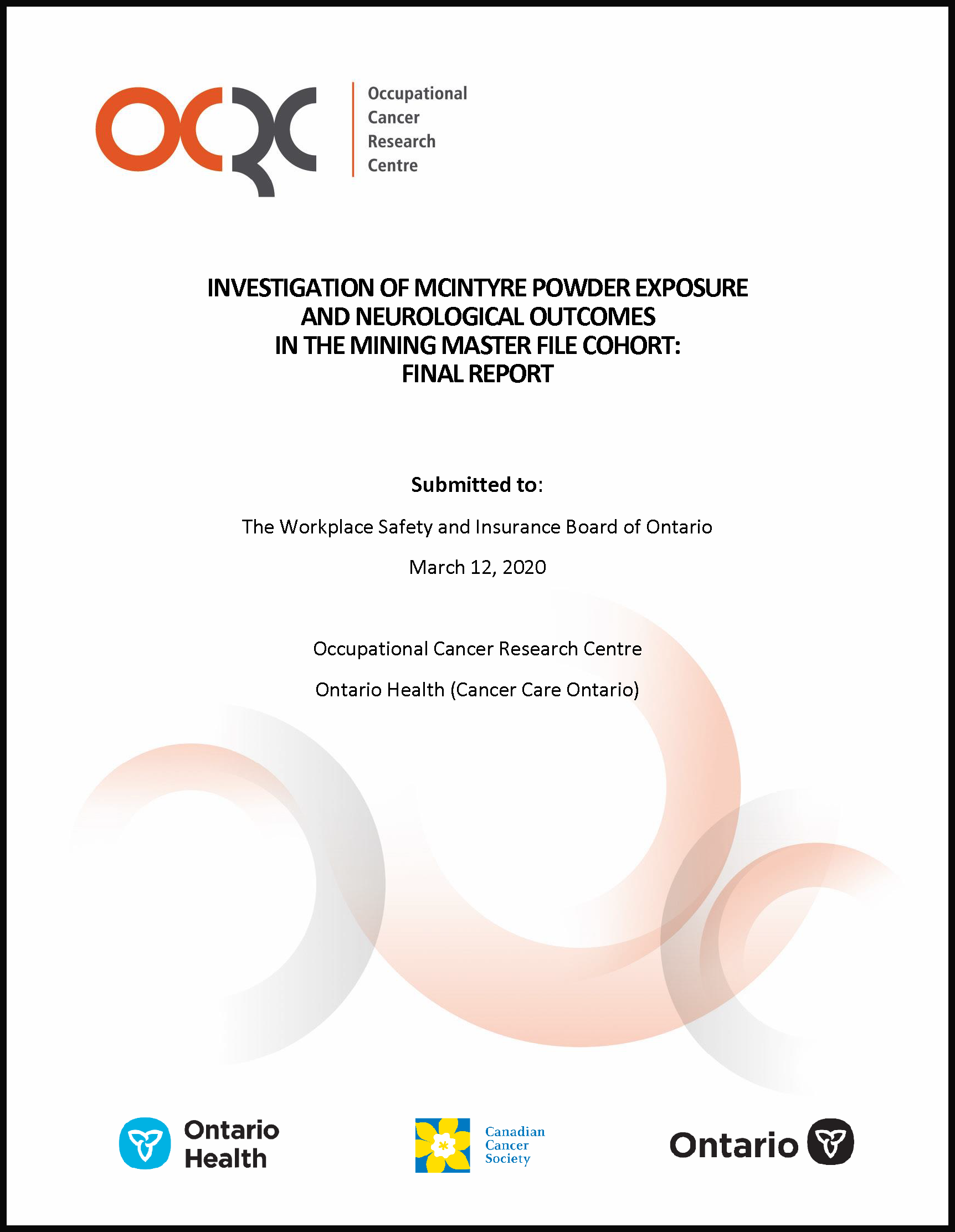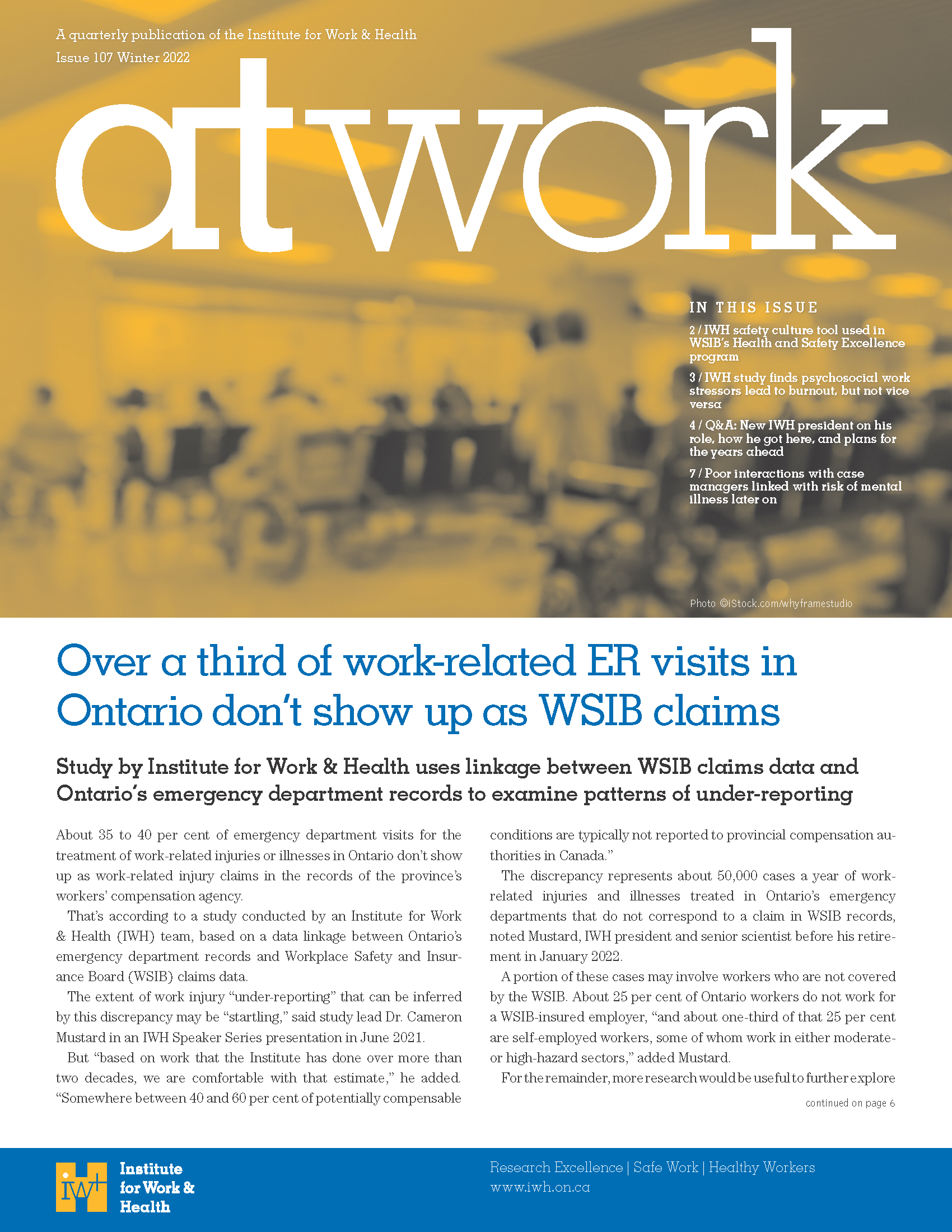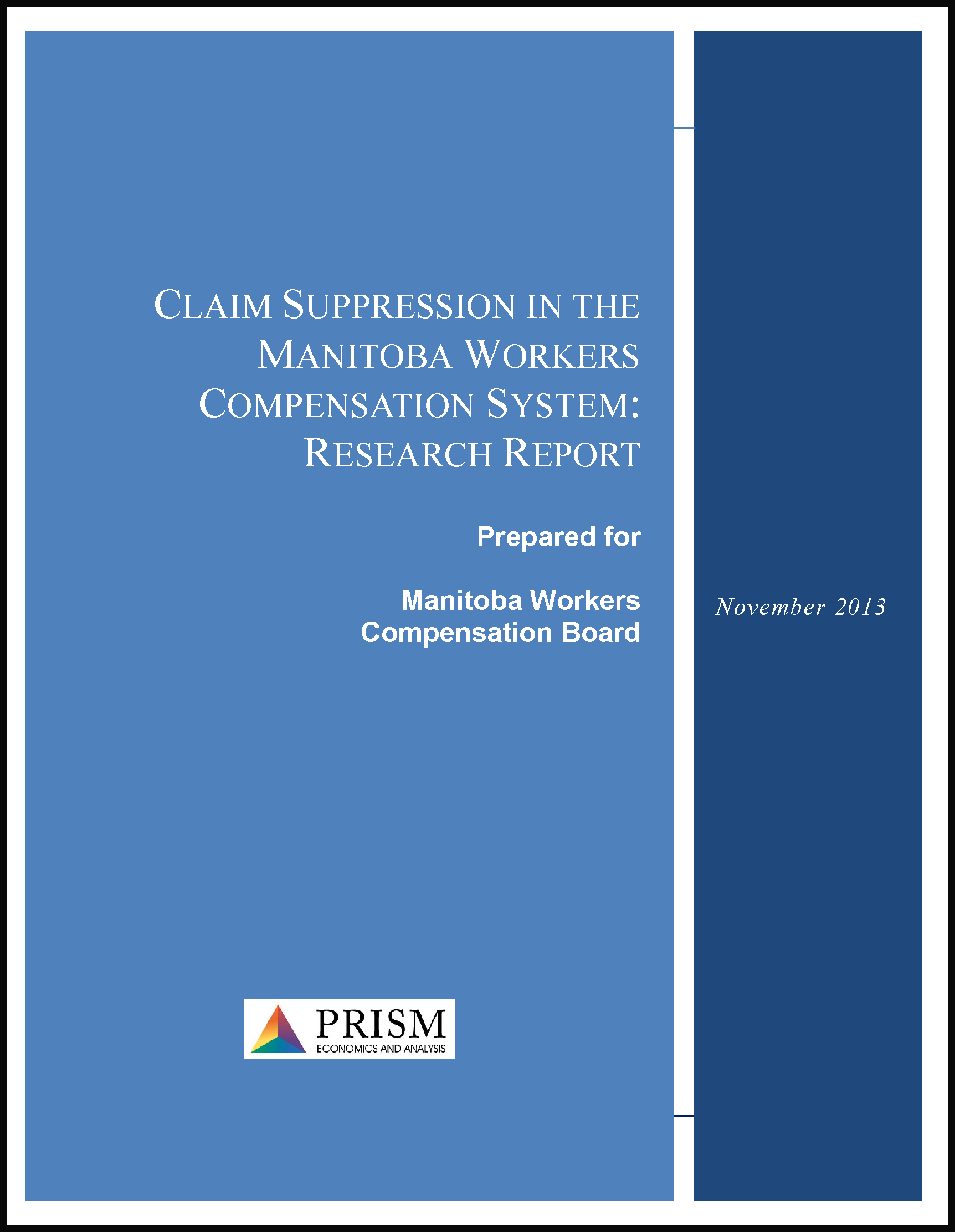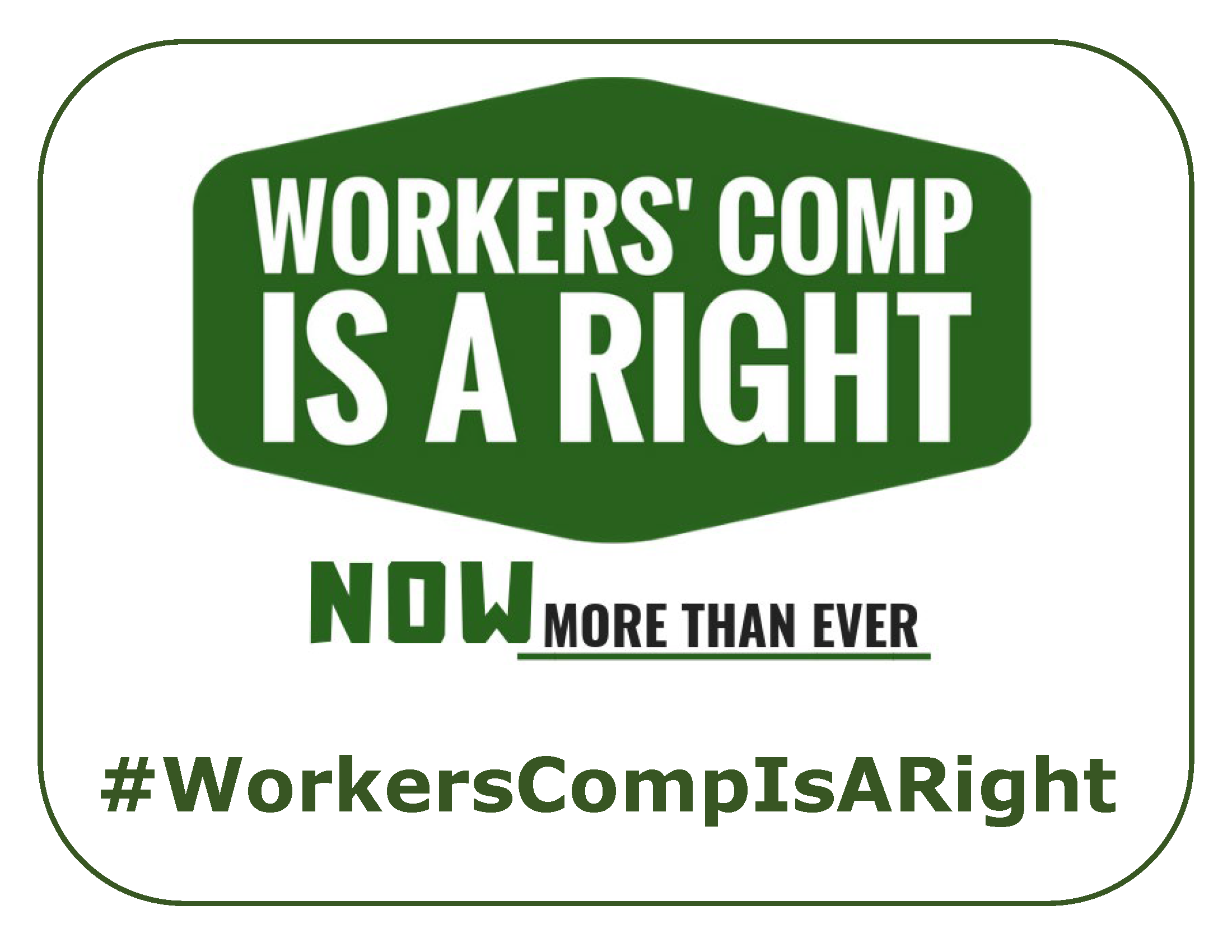Important Papers/Reports Affecting Injured Workers
This page has been setup to provide you with helpful information to help you fight against your WCB, as well as to advocate for other injured workers!Why Use Scientific Reports, Legal Reference Papers, and Other Reports
Often times people mock and make fun of scientific research. This is especially the case when a research study is based on something completely useless to society. Some examples of really crazy useless studies:
- A study that found “the beneficial effect of electric fans in extreme heat and humidity”
- A study that found “Depressed individuals may fail to decrease sadness”
- A study that found “Being homeless is bad for your health”
- A study that found “Statistical analysis reveals Mexican drug war increased homicide rates"
- A study that found “a Difference Between the Sexes”
However, as you will see and learn here, scientific research papers, legal reference papers, and other reports can be an extremely powerful tool for injured workers, their representatives, and advocates of injured workers.
There are two ways these papers/reports can directly benefit injured workers.
Frist, is when an injured worker advocate, group, and/or individual injured worker is fighting for change for the better. When they are speaking to an individual or group of influence. They can refer to these papers/reports instead of just saying something is wrong. This brings major credibility to their fight for positive change. This is because the opinions are of experts. Also, the papers/reports give powerful reasons for positive change. The papers/reports also make an injured worker’s personal story of their experiences more powerful and credible. This is when the injured worker is telling of their experiences and compares their experiences with the papers/reports.
Second, is when an injured worker and/or their representative is appealing a decision. They can use this information to confirm the injured worker has been unjustly treated and stigmatized.
For example, often times workers compensation boards will unjustly and solely attribute degeneration and/or osteoarthritis as an age-related condition. When in fact the degeneration and/or osteoarthritis was solely caused by the individual’s work they performed. Work that was heavy repetitive work. Degeneration and/or osteoarthritis is simply an excessive wearing of the body. So, if a worker with an age of 30, has considerably degeneration in their lower back and the work they did was heavy repetitive work. Then the degermation is a work-related injury and not an age-related condition. To prove this, using these papers/reports, the representative and/or the injured worker would:
- First, confirm the type of work the individual performed. Such as, occasional lifting, regular lifting, or nonstop listing, the average amount of weight they lifted and have them state that;
I have yet to ever see a WCB/WSIB/WorkSafe report of injury form ask the type of working conditions the individual performed. They do say what did they do at time of accident, but this is somewhat misleading. It should ask what type of work did the individual regularly perform? Then provide specific examples with clear objective definitions. Such as, light lifting/pushing/pulling (less than 5lbs lifting), light-medium lifting/pushing/pulling (5 to 20 lbs) medium light lifting/pushing/pulling (20 to 30 lbs) medium-heavy light lifting/pushing/pulling (30 to 50lbs), heavy (50 to 65 lbs) extremely heavy lifting/pushing/pulling (over 65 lbs) - Second, if possible, show medical records prior to the individual performing this type of work. This will confirm the individual never had any prior complaints or problems of an injury in the area of concern.
In virtually all cases of individuals being accused or deemed of have a pre-existing condition, the workers compensation board and/or employer will see the word degeneration and/or osteoarthritis and claim that means a pre-existing non-work-related condition. They will also imply to be anything but work-related and claim it is age-related. - Third, have the individual go to their doctor, and/or specialist. Provide the doctor, and/or specialist: a copy of the opinion of a decision maker or claim by the employer that the degeneration is not work-related reports, a description of the working tasks they performed, and a copy of the reports on degeneration. Then as the doctor, and/or specialist to provide an expert medical opinion of the individual’s degeneration to confirm it is not age-related, but it is work-related.
in the majority of cases the workers compensation board and/or the employer will not have a medical opinion of what the degeneration is medically caused by in the individual. Instead, they will make assumptions it is not work-related. - Fourth, in making your submissions that the degeneration is work-related, reference several of the medical papers below. Always provide copies in your submissions. Never assume they have them. Also add when referencing the papers, that it is NOT your opinion but the EXPERT opinion of a scientific researcher who’s paper was peer reviewed and published in a medical journal.
In every case the workers compensation board and the employer who have made such claims, their claims will be found to not to be based on medical or scientific research, but on their personal opinions. In which case, if it is a submission being made by the employer/representative this would be what is called as a legal objection, being they are assuming facts not in evidence. The facts being assumed are that the degeneration is age-related, and/or not work related.
It is important to know that even if a study was done in one province or country it is still helpful in another as a tool for advocating and/or fighting for claim entitlement.
The papers/reports are generally broken down into three categories. While a scientific paper published in a scholarly and a legal reference paper carry more weight in consideration to non scientific reports, you should still reference these non-scientific reports. This is because is provides credibility to your situation. For example, if you are claiming you were forced back to work and that a forced return to work program is a common issue. If you reference a report from ONIWG, a provincial injured worker group, it shows that it is not just you raising concern about this issue.
Scientific Papers/Reports These are papers/reports that carry more credibility with decision makers and influencers. This is because they have been peer reviewed. This means that the basis of the report has been independently verified by another scientist. Confirming the results of the research. It is important for you to state that when referencing papers/reports. Never assume that the person you are talking to knows the importance of the papers/reports.
Legal Reference Papers These are papers/reports that are slightly different than scientific papers/reports. They will carry considerable credibility in speaking with a person of influence and/or making fighting a claim. This is because they are used to clarify a legal principle and/or understanding of a process within the workers compensation system. A common example of one is “Butterworths Workers' Compensation in Ontario Service” or “Workers' Compensation in British Columbia”
Non-Scientific Papers/Reports These are papers/reports that are not as credible as scientific or legal reference papers/reports. However, they still provide important information for understanding and identifying systemic institutional issues within the workers compensation system. Mos importantly, they gain credibility to an issue an individual maybe facing. This is because it allows them to say it is not just them, but it is a common issue identified by many others.
Where possible a summary and additional information for each paper/report will be provided. Also, there will be every effort to obtain and retain the copies of the papers/reports, as opposed to providing a link for you to get the report. This way you can download the report/paper directly from here. More importantly, it will provide a backup copy of the paper/report. This is because some good papers/reports have disappeared over time, or it has been made harder to find.
There are considerably more papers/reports yet to post, than what is available below. So please check back regularly to see them.
As always, full credit is given to the authors of the papers/reports and there is no credit nor profit in any way from the publishing of the papers/reports. However, if there has been a paper/report that has been published, which should not be. Please send an E-mail and it will be removed.
List of Important Reports/Papers Affecting Injured Workers
Medical Papers Disproving Malingering/Faking
Functional Overlay: An Illegitimate Diagnosis? - U.S.Medical Papers Proving Degeneration is Work-related
What does degeneration mean? The use and abuse of an ambiguous word - NZOsteoarthritis or Osteoarthrosis:Commentary on Misuse of Terms
Lumbar disc nomenclature - North America
Prevalence of Work-Related Musculoskeletal Disorders Among Surgeons - US - AMA
Investigation of McIntyre Powder Exposure
Investigation of McIntyre Powder Exposure - OntarioQuality of Overall Service Reports Regarding the WCB/WSIB/WorkSafe
“I grabbed my stuff and walked out”: Precarious workers’ responses and next steps when faced with procedural unfairness during work injury and claims processes- June 2022 OHC Submission to the Workers Compensation Act Review 2017 - ManitobaOver a third of work-related ER visits in Ontario don’t show up as WSIB claims - Ontario
New Directions: Report of the WCB Review 2019 - British Columbia
Workplace Injury Claim Supression: Final Report - Ontario
Workplace Injury Claim Supression: Final Report - Manitoba
Prescription Over-Ruled - Ontario
Bad Medicine - Ontario
Red Flags/Green Lights - Ontario 2009
Medical Papers Disproving Malingering/Faking
Often the WCB/WSIB/WorkSafe will falsely and without any proof allege an injured worker is faking. They will then get their “special doctors” to make a so-called diagnosis and claim you are faking. Ironically, this diagnosis is not real or recognized
I will provide more papers and reports about the subject of malingering and Functional overlay and how the WCB/WSIB/WorkSafe improperly use it for their gain and harm to injured workers, when I have time. Including any from the American Medical Association & the American Psychiatric Association, which are considered a globally accepted medical reference.
Functional Overlay: An Illegitimate Diagnosis? - U.S.
I found this medical paper when I was performing my own research. I learned I was diagnosed with this condition. First, the so called WSIB Doctor never told me about this diagnosis. Second. The Doctor was not even qualified to make such a diagnosis. As malingering or any other condition is considered a psychological condition and requires a specialist.

(Click the image to download
a pdf copy of the report)
Click here to return to list of Reports
Medical Papers Proving Degeneration is Work-related
Often the WCB/WSIB/WorkSafe will intentionally and deceptively claim that an injured workers current problem is from an age-related condition. In most cases it is really because the injured worker had been performing heavy physical repetitive work, which has simply prematurely worn down the injured worker’s body. This is also known as a Repetitive Strain Injury – RSI.
I will provide more papers and reports about the subject of degeneration and how the WCB/WSIB/WorkSafe improperly use it for their gain and harm to injured workers, when I have time. Including any from the American Medical Association which is considered a globally accepted medical reference.
What does degeneration mean? The use and abuse of an ambiguous word - NZ
This medical paper was provided to be by David Newberry of Injured Worker Consultants – IWC, who I am extremely grateful for him providing it to me. As like most injured workers, I had a renewed sense of the fact that I am not crazy, I am not imagining my symptoms of pain and limited mobility.
The is a medical paper which was published in a reputable medical journal. It discusses a nurse having to perform have repetitive work and the impact of being improperly diagnosed with Degenerative Disc Disease as being an age-related condition when it was a work-related condition.
More than likely the WCB/WSIB/WorkSafe will claim the report is not form Canada, but you need to indicate it is form New Zealand with an almost identical system of healthcare and justice system. Also, most importantly it was published.

(Click the image to download
a pdf copy of the report)
Click here to return to list of Reports
Osteoarthritis or Osteoarthrosis:Commentary on Misuse of Terms
I found this medical paper in my research, but have not fully read and studied it yet. When I do, I will provide my comments below.

(Click the image to download
a pdf copy of the report)
Click here to return to list of Reports
Lumbar disc nomenclature - North America
This medical paper was also provided to be by David Newberry of Injured Worker Consultants – IWC, who I am again extremely grateful for him providing it to me. As like most injured workers, I had a renewed sense of the fact that I am not crazy, I am not imagining my symptoms of pain and limited mobility.
The following passage was also sent with the report from David:
"Here is the paragraph I often use and the argument I make from that report As is noted in the 2014 paper “Lumbar disc nomenclature, Version 2.0”, the term “degeneration” should “not compel the observer to differentiate pathological (that is, caused by something) from the normal consequences of aging.” Even more significantly, the paper goes on to say: Preceptions of what constitutes the normal aging process of the spine have been greatly influenced by postmoretem anatomical studies involving a limted number of specimens, harvested from cadavers from different age groups, with unknown past medical histories and the presumption of the absence of lumbar aging.” Put another way, the very notion that we have an idea of what effects “normal aging” has on the spine is not based on either an adequate sample size, or even on studies with controlled variables. Looking at spines from humans whose history you do not know, and assuming aging as the cause, is not sound science. "

(Click the image to download
a pdf copy of the report)
Click here to return to list of Reports
Prevalence of Work-Related Musculoskeletal Disorders Among Surgeons and Interventionalists
A Systematic Review and Meta-analysis
This medical paper was yet another provided to be by David Newberry of Injured Worker Consultants – IWC, who I am again extremely grateful for him providing it to me. As like most injured workers, I had a renewed sense of the fact that I am not crazy, I am not imagining my symptoms of pain and limited mobility. Confirmed in this yet another report but from the doctors!
The following passage was also sent with the report from David:
"the most interesting take-away from the article is that doctors themselves consider degeneration to be a work related musculoskeletal disorder. It could be worth referencing in cases where degeneration is a factor, to counter the WSIB assumption that degeneration = non-work-related, and to push back against the questionable WSIAT discussion papers on the issue.”

(Click the image to download
a pdf copy of the report)
Click here to return to list of Reports
Investigation of McIntyre Powder Exposure and Neurological Outcomes in the Mining Master Cohort: Final Report - Ontario
This is a report that was prepared and submitted to the WSIB (Ontario WCB), by a Dr. Paul A. Demers, who is a Senior Scientist at Ontario Health (Cancer Care Ontario) and Professor at the University of Toronto.
It is important to note that the report was funded by the WSIB.
I have not fully reviewed this report, yet but when I do I will include my summary of the report here.
It should also be noted that Janice Martell who lost her dear father to this, was THE single most important driving force that pushed for the report to be commissioned. janice created the Mcintyre Powder Porject Campaign. Janice has been in the media more times than one can count, disucssing the tragic way miners were treated by their inhumane employers!
As I said to Janice the first time I met her “They are treating human beings as experimental guinea pigs, to force workers to undergo experiments, is without question a violation of the UN’s Declaration of Human Rights, never mind a violation of Provincial human rights laws or the Charter!”
To learn more about Janice’s efforts you can view her website http://www.mcintyrepowderproject.com
Also you can check out the Facebook page https://www.facebook.com/mcintyrepowderproject

(Click the image to download
a pdf copy of the report)
Click here to return to list of Reports
Quality of Overall Service Reports Regarding the WCB/WSIB/WorkSafe
Below are reports prepared for and/or about the various WCB/WSIB/WorkSafes across Canada.“I grabbed my stuff and walked out”: Precarious workers’ responses and next steps when faced with procedural unfairness during work injury and claims processes

OHC's Submissions to the Workers Compensation Act Review 2017

(Click the image to download
a pdf copy of the report)
Click here to return to list of Reports
Over a third of work-related ER visits in Ontario don’t show up as WSIB claims
The study confirms claim suppression and the after effects of Doug Ford’s programs of not reporting no lost time claims and no enforcements by Ministry of Labour. In effect it confirms Doug Ford’s cooking of the books for Big business! Dr. Cameron Mustard was reported saying in the IHW release that “Somewhere between 40 and 60 per cent of potentially compensable conditions are typically not reported to provincial compensation authorities in Canada.” Further that about 50,000 cases a year of work-related injuries and illnesses treated in Ontario’s emergency departments that do not correspond to a claim in WSIB records, noted Mustard, IWH president and senior scientist before his retirement in January 2022. There is a need for more research says IWH. One can only imagine what further research will reveal such as when temporary migrant workers, are injured they are shipped back home, like a person returning a broken product they bought back to the store. Also, and most disturbingly the report identified another factor where underreporting was found “most evident among younger workers” during the 2007/08 financial crisis. Confirming that in economic hard times workers are pressured not to report. Raising a need for a young worker awareness program.

(Click the image to download
a pdf copy of the report)
To read IH's Press Release click here
Click here to return to list of Reports
New Directions: Report of the WCB Review 2019 - British Columbia
This is a report that was prepared and submitted to the British Columbia Minister of Labour.
It is important to note that the report was funded by I do not know as of yet. I have not read the entire report.
I have not fully reviewed this report, yet but when I do I will include my summary of the report here.
The following reference was provided to be by George. Thank you George it is very improtnat I learn of such reports.
Page 9 Indigenous workers denied twice as often as non natives
Page 28 show the bonus programs for Case managers and Board Officers to knowingly deny legitimate claims.
Page 39 Case Managers Board officers not following medical evidence
Page 48 treating workers like criminals creating barriers for WCB profit
Page 48 Maladminstration hiding faxes,exfoliating files from workers.
Page 55 over 2000 complaints a year just a part of doing business.
Page 68 Worker called a loser and swore at by Case Manager
Page 70 Board officers not following medical evidence and if you don't like it appeal knowing you have no chance
Page 85 Board Managers making medical decision without see worker
Page 101 Board members pressuring Case Managers to keep the 240 bucket low, cutting off or plateau the injured to get them off the books
Page 107 Denying worker income while on treadmill of appeals
Page 115 WCAT people ruling on there own cases on next appeal
Page 118 Interest payment virtually removed since 2001
Page 131 Women denied twice as often as men
Page 139 Termination of workers for filing a claim, WCB does nothing
Page 160 Duty to Accommodate
Page 164 Voc Rehab dropped 99 percent in 2 years
Page 165 Using Deeming as a process to cut off Loss of Earnings
Page 192 Mandate Agreement between WCB and gov't Mem of Understand Arms Length Agreement
Page 206 Section 15 of Charter of Rights violated
Page 313 WCB bonus plan and Gainsharing
Page 313 Holding 10 percent for executives until Oct 2018
Page 391 Calculating Retro Benefits
Page 396 Paid interest retro based on WCB investments

(Click the image to download
a pdf copy of the report)
Click here to return to list of Reports
Workplace Injury Claim Supression: Final Report - Ontario
This is report was prepared for the WSIB in 2013 and was regarding the concern of employer claim supresison.
Claim supression is when an employer encourages or threatens an injured worker not to report the work accidnet and injuries to the WSIB. Since the release of the report, the law, whcih is s. 22.1 was changed to punish employers who attempt to supress workplace accidents and injury claims.
Prohibition, claim suppression
22.1 (1) No employer shall take any action, including but not limited to the prohibited actions set out in subsection (2), in respect of a worker with the intent of,
(a) discouraging or preventing the worker from filing a claim for benefits under section 22; or
(b) influencing or inducing the worker to withdraw or abandon a claim for benefits made under section 22. 2015, c. 34, Sched. 3, s. 1.
Same
(2) For the purposes of subsection (1), the following actions are prohibited:
1. Dismissing or threatening to dismiss a worker.
2. Disciplining or suspending, or threatening to discipline or suspend a worker.
3. Imposing a penalty upon a worker.
4. Directly or indirectly intimidating or coercing a worker with threats, promises, persuasion or other means. 2015, c. 34, Sched. 3, s. 1.
Administrative penalty
(3) An employer who contravenes subsection (1) shall pay the prescribed amount to the Board. This payment is in addition to any penalty imposed by a court for an offence under section 155.1. 2015, c. 34, Sched. 3, s. 1.
Click here to see the actual section of law
Sadly, the WSIB does little, if anything to enforce this seciton of law.

(Click the image to download
a pdf copy of the report)
Click here to return to list of Reports
Workplace Injury Claim Supression: Final Report - Manitoba
This is report was prepared for the WCB in MnaitobaSIB in 2013 and was regarding the concern of employer claim presison.
Claim supression is when an employer encourages or threatens an injured worker not to report the work accident and injuries to the WCB.

(Click the image to download
a pdf copy of the report)
Click here to return to list of Reports
Prescription Over-Ruled - Ontario
This is report was prepared in Co-operation by the Ontario Federal of Labour and the Ontario Network of Injured Workers Groups.
The report discusses how the WSIB (Ontario’s WCB) completely ignores an injured worker’s doctor.

(Click the image to download
a pdf copy of the report)
Click here to return to list of Reports
Bad Medicine - Ontario
This is report was prepared by IAVGO and Antony Singleton disucssing the WSIB's Transformaiton of its helathcare spending for injured workers.

(Click the image to download
a pdf copy of the report)
Click here to return to list of Reports
Red Flags/Green Lights: A guide to identifying and solving return-to-work problems - Ontario Jan. 2009
This a guide develoepd out of a study conducted by IWH on the WSIB where they look into how the WSIB in Ontario improperly judges injured workers durring the return to work process.

(Click the image to download
a pdf copy of the report)
Click here to return to list of Reports
